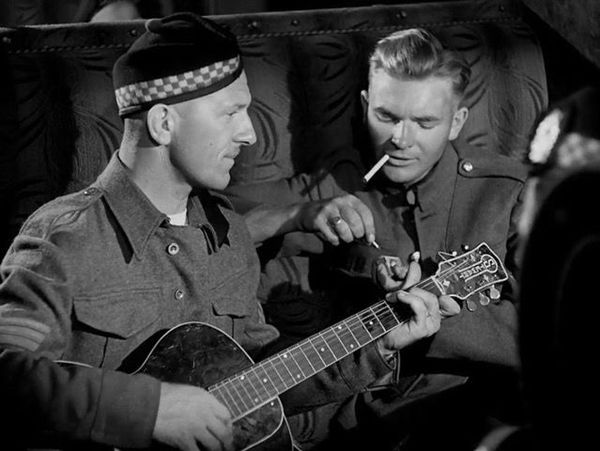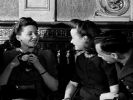Eye For Film >> Movies >> Listen To Britain (1942) Film Review
Listen To Britain
Reviewed by: Rebecca Naughten

A day in the life of Britain during wartime, Listen To Britain focusses not on the armed forces but the home front as the country goes quietly (or not) about its daily business. Starting at dusk, the film creates a symphony where everyday life (the breeze in the fields or the trees, birdsong, the sound of the sea, the pips before BBC radio news, snippets of overheard interactions) is interspersed with sounds of the nation at war (the rhythmic clank of the military hardware production lines, footsteps marching in unison, or tanks disturbing the peace as they rumble through a village). Sometimes the two coexist in harmony, as in the sequence where women in a factory sing along to a song on the radio while they work.
Humphrey Jennings is rightly revered for his artistry in combining sound and image but here the line between direction and editing is so indivisible that editor Stewart McAllister received a co-direction credit. As well as frequently being matched by the rhythm of the editing, sound often acts as a bridge between different visual sequences (a fade to black divides most sections), usually via pieces of music that fade out as the sounds of the new location gradually take over. As with Jennings' Spare Time, music is shown to be a unifying force within different communities, and something to lose yourself in - whether soldiers far from home singing together on a train, couples thronging to the dance floor, music hall performers Flanagan and Allen entertaining a canteen that is full to bursting, or Myra Hess's pianoforte performance at the National Gallery, complete with the Queen Mother in attendance.

Life goes on. Children are observed skipping in formation in the playground - that several children are out of time with their own clapped beat is an instance of Jennings capturing the ephemerality of life itself in a recording of happenstance. Elsewhere, a man strolls down a busy street, women sit on the steps of the National Gallery eating their sandwiches while another peruses the postcards in the museum's shop. That's the other side of what is depicted, the implicit suggestion that you don't have to be on the frontline to be part of a collective effort, and that continuing to live your life as you choose - to enjoy life's small pleasures - during wartime is a manifestation of resilience and a form of resistance.
The film celebrates both wartime collectivism and the ordinarily invisible quotidian - those fleeting moments that shape our lives and how we experience the world around us - and is a poetic evocation of Britain under pressure, prevailing with a spring in its step. Listen to Britain is available to watch for free on the BFI Player and is showing as part of a Jennings showcase at the AV Festival
Reviewed on: 21 Feb 2016















